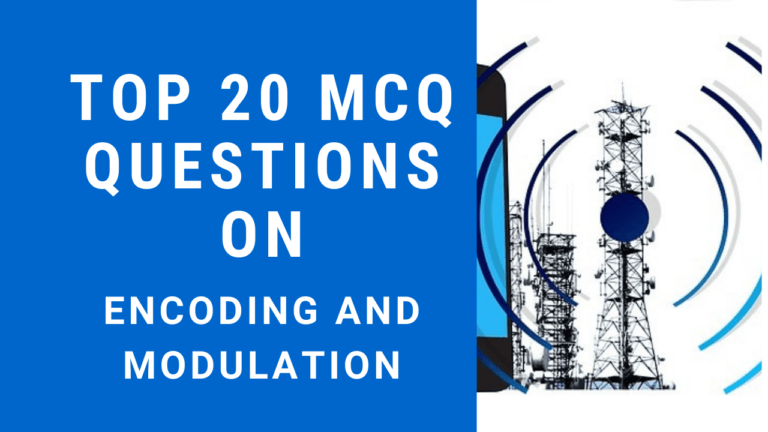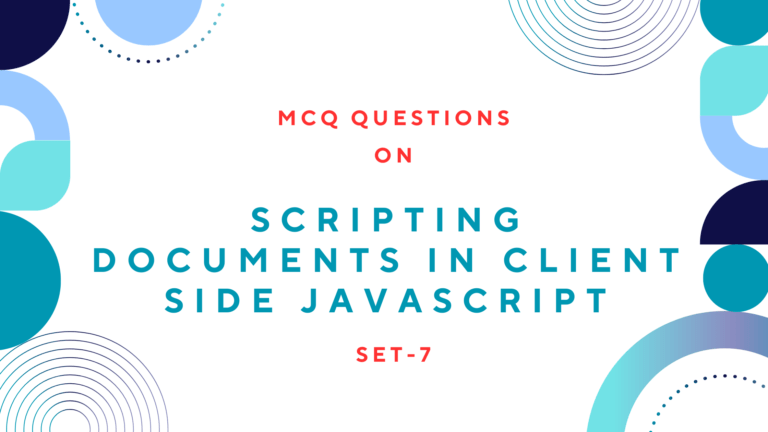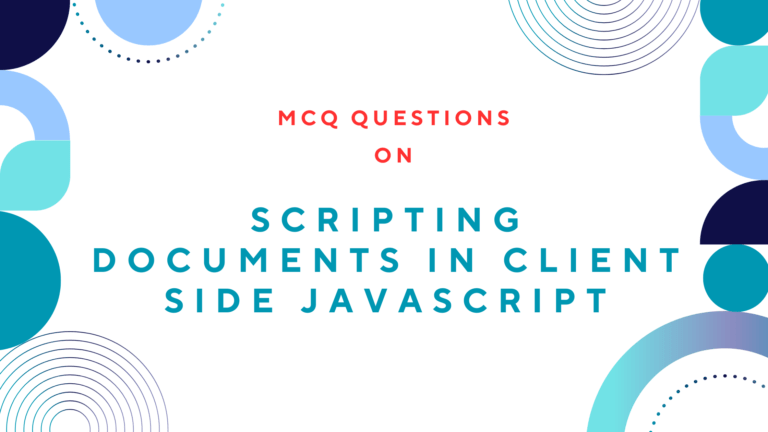Read Also: Top 20 MCQ Questions on Antennas and Propagation
1) Modulation techniques involve operation on which of the following parameters.
i. Amplitude
ii. Frequency
iii. Phase
A. i and ii only
B. ii and iii only
C. i and iii only
D. All i, ii and iii
2) Which of the following encoding techniques are available in the modulation process?
i. digital-to-analog
ii. digital-to-digital
iii. analog-to-analog
iv. analog-to-digital
A. i, ii and iii only
B. ii, iii and iv only
C. i, iii and iv only
D. All i, ii, iii and iv
3) State whether the following statements about the different encodings techniques available in modulation are True or False.
i. For wireless transmission, digital data and digital signals must be converted to analog signals.
ii. A baseband analog signal must be modulated into a high-frequency carrier for transmission.
A. i-True, ii-False
B. i-True, ii-True
C. i-False, ii-True
D. i-False, ii-False
4) … is a type of amplitude modulation which represents the binary data in the form of variations in the amplitude of a signal.
A. Amplitude shift keying (ASK)
B. Binary phase-shift keying (BPSK)
C. Frequency shift keying (FSK)
D. Quadrature phase-shift keying (QPSK)
5) … is the digital modulation technique in which the frequency of the carrier signal varies according to the digital signal changes.
A. Amplitude shift keying (ASK)
B. Binary phase-shift keying (BPSK)
C. Frequency shift keying (FSK)
D. Quadrature phase-shift keying (QPSK)
6) … is used to transmit digital data over optical fiber.
A. Amplitude shift keying (ASK)
B. Binary phase-shift keying (BPSK)
C. Frequency shift keying (FSK)
D. Quadrature phase-shift keying (QPSK)
7) … is used on high frequency (3 to 30 MHZ) radio transmission.
A. Amplitude shift keying (ASK)
B. Binary phase-shift keying (BPSK)
C. Frequency shift keying (FSK)
D. Quadrature phase-shift keying (QPSK)
8) … is the digital modulation technique in which the phase of the carrier signal is changed by varying the sine and cosine inputs at a particular time.
A. Amplitude shift keying (ASK)
B. Phase shift keying (PSK)
C. Frequency shift keying (FSK)
D. Phase modulation (PM)
9) … techniques are widely used for wireless LAN’s.
A. Amplitude shift keying (ASK)
B. Phase shift keying (PSK)
C. Frequency shift keying (FSK)
D. Phase modulation (PM)
10) In …, the frequency of the carrier signal varies in accordance with the instantaneous amplitude of the modulating signal.
A. Frequency Modulation (FM)
B. Amplitude Modulation (AM)
C. Pulse Code Modulation (PCM)
D. Phase Modulation (PM)
11) In …, the amplitude and the frequency of the carrier signal remains constant.
A. Frequency Modulation (FM)
B. Amplitude Modulation (AM)
C. Pulse Code Modulation (PCM)
D. Phase Modulation (PM)
12) In …, a continuous wave goes on continuously without any intervals.
A. Frequency Modulation (FM)
B. Amplitude Modulation (AM)
C. Pulse Code Modulation (PCM)
D. Phase Modulation (PM)
13) In …, the message signal is represented by a sequence of coded pulses.
A. Frequency Modulation (FM)
B. Amplitude Modulation (AM)
C. Pulse Code Modulation (PCM)
D. Phase Modulation (PM)
14) … spread spectrum is typically used to transmit digital information.
A. Time Hopping (TH)
B. Direct Sequence (DS)
C. Frequency Hopping (FH)
D. Chrip
15) … spread spectrum employs a carrier that is swept over a range of frequencies.
A. Time Hopping (TH)
B. Direct Sequence (DS)
C. Frequency Hopping (FH)
D. Chrip
16) State whether the following statements about the Cyclic Redundancy Checks (CRC) are True or False.
i. It is based on binary division.
ii. It can detect all single-bit errors.
iii. It can not detect all double-bit errors.
A. i-True, ii-False, iii-True
B. i-True, ii-True, iii-False
C. i-False, ii-True, iii-False
D. i-False, ii-False, iii-True
17) Error detection and correction are implemented in which of the following layers of the OSI model.
i. Application layer
ii. Data link layer
iii. Transport layer
iv. Network layer
A. i and iii only
B. ii and iv only
C. iii and iv only
D. ii and iii only
18) … is an error detection method in which a receiver can detect all single-bit errors in each codeword.
A. Parity check
B. Cyclic redundancy check
C. checksum
D. Redundancy check
19) State whether the following statements about checksum are True or False.
i. The checksum segment is sent along with the data segments.
ii. It can not detect any errors involving an even number of bits.
A. i-True, ii-False
B. i-True, ii-True
C. i-False, ii-True
D. i-False, ii-False
20) … is a form of spreading in which the center frequency of a conventional carrier is altered many times within a fixed time period.
A. Time Hopping (TH)
B. Direct Sequence (DS)
C. Frequency Hopping (FH)
D. Chrip
Answers:
- D. All i, ii and iii
- D. All i, ii, iii and iv
- B. i-True, ii-True
- A. Amplitude shift keying (ASK)
- C. Frequency shift keying (FSK)
- A. Amplitude shift keying (ASK)
- C. Frequency shift keying (FSK)
- B. Phase shift keying (PSK)
- B. Phase shift keying (PSK)
- A. Frequency Modulation (FM)
- D. Phase Modulation (PM)
- B. Amplitude Modulation (AM)
- C. Pulse Code Modulation (PCM)
- B. Direct Sequence (DS)
- D. Chrip
- B. i-True, ii-True, iii-False
- D. ii and iii only
- A. Parity check
- A. i-True, ii-False
- C. Frequency Hopping (FH)
Read Next: Top 20 MCQ Questions on GSM Fundamentals










Comments are closed.